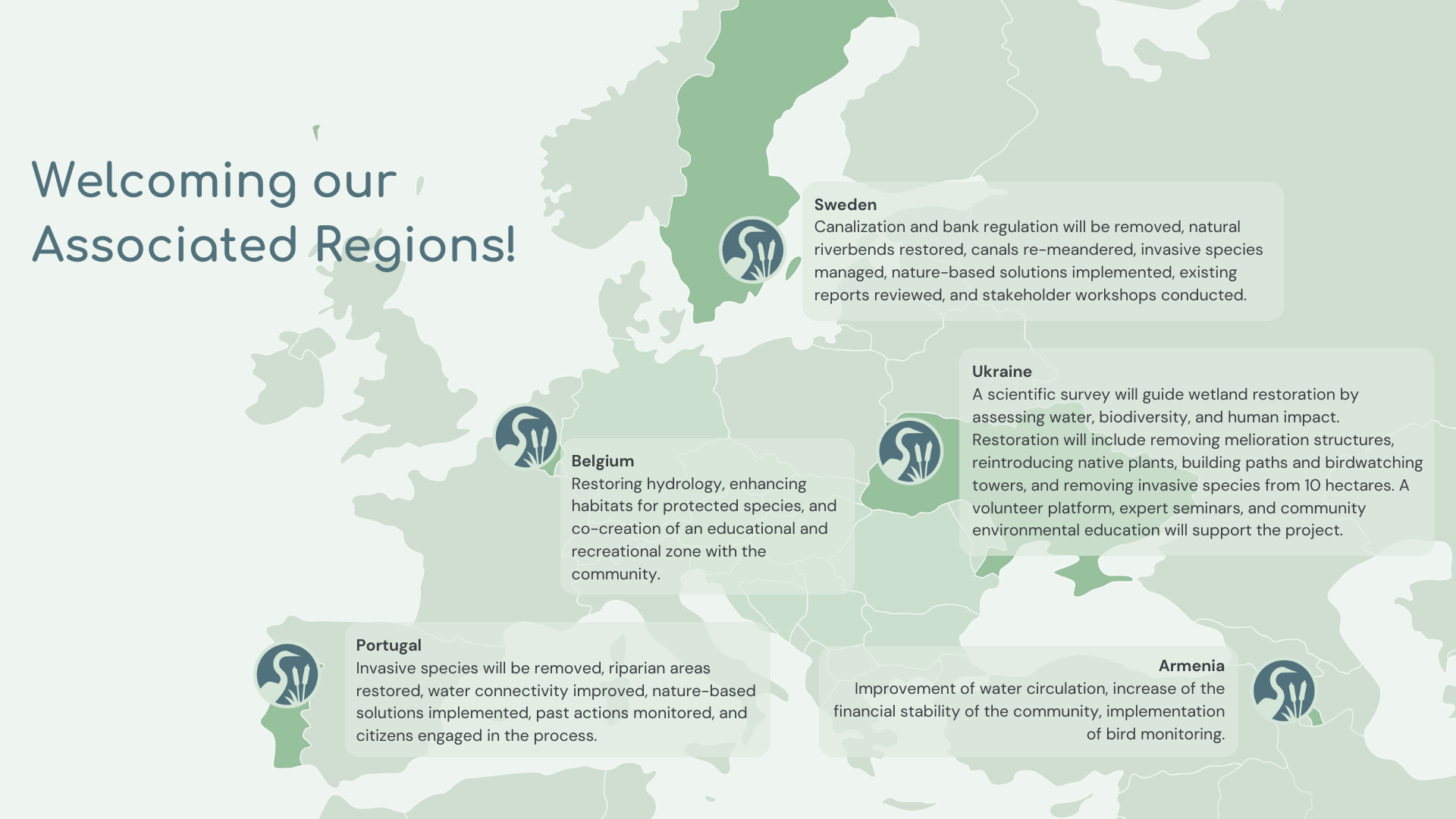Implementation sites
Vlasina, Serbia
Eradication of Invasive and Tree Species from Bogs, Restoration of Riparian Areas, and Conservation of Biodiversity

Site features
Lake Vlasina is the highest and largest semi-artificial lake (reservoir) in south-east of Serbia, which belongs to the Eastern Balkan. It was created in the 1950s when rivers feeding the outflow of the peat bog Vlasinsko blato were closed by a dam and the peat bog was submerged. This unique ecosystem, once the largest of its kind in Serbia, boasts diverse features such as hilly landscapes, wet meadows, and floating islands. Recognized nationally as a Landscape of Outstanding Features, the area also holds international designations: Important Bird Area (IBA), Important Plant Area (IPA), Prime Butterfly Area (PBA), and an Emerald Network site. Moreover, it has attained Ramsar Site status (nr. 1738). Serving as an important source of electric energy, both the lake and its surroundings encounter challenges from fluctuating water levels, leading to prolonged droughts and the deterioration of adjacent peat soil. Preserving the extraordinary natural features and rich cultural heritage of Lake Vlasina is not just a matter of environmental importance; it’s a necessity for the region’s future, as current habitat loss is hindering both its ecological well-being and economic potential.
Ecosystem
The biogeographical region is home to many noteworthy flora and fauna species, including Drosera rotundifolia, Potentilla pallustris, Betula pubescens, Carex firosa, C. limosa, Cirsium helenioides, Riparia riparia, Tringa tetanus, Aythya fuligula, Arvicola terrestris and Lutra lutra.
Facts & Figures

Restoration activities will impact an area of 1,600 ha

The total area of floating peat islands is 10h

140 registered bird species

8.1% of the flora is endemic
Challenges
The largest challenge for Vlasina wetland restoration is to align the restoration plans with the interests of the Electric Power Industry of Serbia which is owning the sites.
Further challenges could be:
ꕥ The point of multiple ownership of the agricultural land
ꕥ The decreasing amount of precipitation and water due to climate changes.

Location
Serbia, municipality of Surdulica, 42°42’28″N 22°20’31″E
Size
Restoration efforts will target four polygons with a combined area of 11.85 hectares, addressing a broader affected area spanning 1,600 hectares.
The Vlasina region, shaped by the interplay of nature and human influence, stands as a boreal refuge and a guardian of unique ecosystems within its floating peat islands.
Restore4life implementation plans
The action plan considers the following measures: testing of different approaches for mechanical harvesting of invasive aquatic plants; afforestation and stabilization of eroded shoreline; removal of late-successional and invasive plant species from transitional mire habitats; restoration of riparian areas by planting the transitional mire, meadow and tall herb species; increase of water retention time in targeted habitat types by a) creation of meanders; b) passive water rising with weir-culvert construction, as well as pre– and post-restoration monitoring activities.
Involvement of the community
The planned restoration measures are designed in alignment with the continuous input from the local community regarding the environmental and socio-economic priorities. As these measures are implemented, active community participation will continue to be integral to the restoration process, ensuring mutual benefits and maintaining transparent communication channels.
Expected Impact
The implementation of the project activities can contribute to the growth of ecotourism, boosting the local economy and providing recreational opportunities. Wetlands are recognized as vital habitats in supporting local biodiversity and providing educational opportunities. Preservation efforts contribute to sustainable practices and encourage environmental awareness, which adds to the well-being and identity of the local community.
Site gallery





This exceptional area holds the distinction of being a Bi(Tri)lateral Ramsar site, recognized and protected for its ecological significance at the international level.



